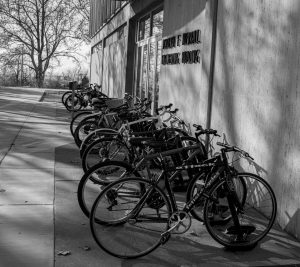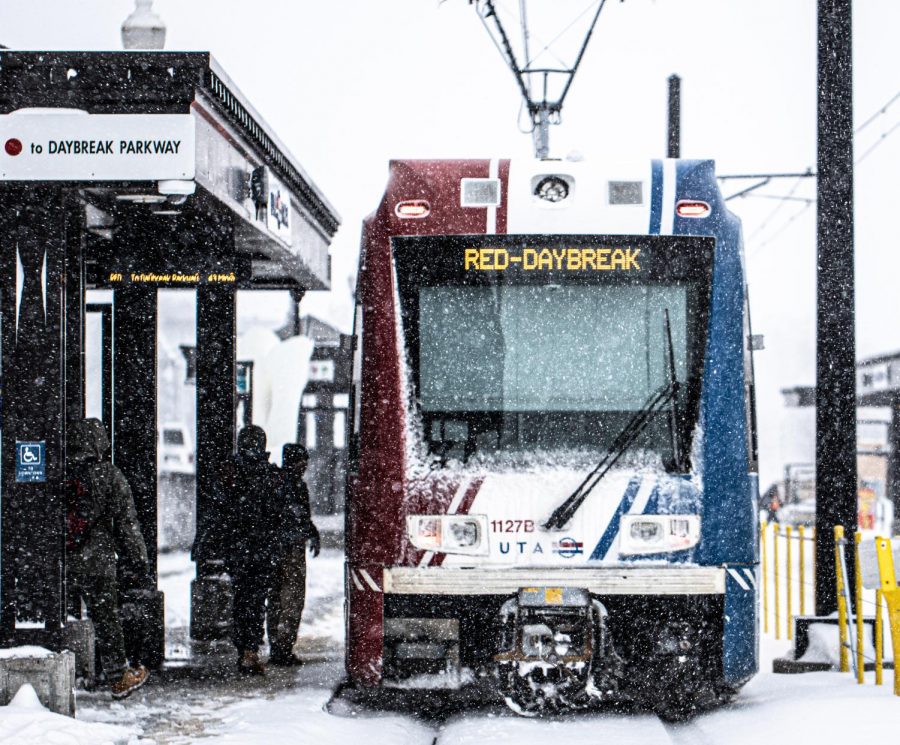The U Continues Move Toward a Residential Campus
Though an increasing number of students live on campus, many students still commute from throughout the Wasatch Front. (Photo by Manasij Mukherjee | Daily Utah Chronicle)
February 20, 2020
Over the past year, the University of Utah has been slowly getting rid of parking and building a new dorm building, Kahlert Village, which will house approximately 990 incoming freshmen in the fall of 2020.
These actions are all part of a shift at the U toward becoming a residential campus, which has been an ongoing process since the 2002 Winter Olympics. According to Barb Remsburg, Director of Housing and Residential Education, they have no end date to the transition.
In 2000, there was only the capacity to house 1200 students, but that number has grown significantly as the U has built Heritage Commons, Marriot Honors Community and Lassonde Studios.
“This is an ongoing opportunity to create facilities that support one University where students succeed and work toward their goals, where they learn to live in a community with others and where they develop a deep culture of belonging to the U,” Remsburg said. “That is the essence of a residential campus.”
For Remsburg, it is not necessarily about students actually living on-campus, but rather making sure that they are engaged and connected on campus.
While some residential universities require first-year students to live on campus, Remsburg said that Housing and Residential Education have not had this conversation, though the idea has floated around campus for several years.

Bridget Sorensen, a psychology and sociology major who commutes from Provo, said that if living on campus was a requirement for freshman year, she would not have gone to the U because she couldn’t afford it.
Currently, the cheapest on-campus options are either a triple or economy double in Heritage Commons and Officers Circle on campus, which costs $4,595 for the 2019-2020 year. Students in these dorms are also required to have a meal plan.
Remsburg said that HRE strives to maintain a variety of price-point options in both housing and, through negotiating with University Dining Services, a variety of meal plan options. HRE also offers scholarships.
Remsburg said there are lots of benefits to living on campus. She said students who live on campus have a higher GPA and higher retention rates from the fall semester to the spring semester. She also said students who live on campus for at least one year have a higher graduate rate by about 12%.
Additionally, a 2016 study found that student engagement on campus improves graduation rates but not GPA, but having a part-time job might also decrease these factors as students have to make trade-offs.
“Whether students are financially stable also may have an effect on the persistence and in turn, success at any given university,” the study said. The study cited previous literature that found success in college is also determined by a student’s ability to overcome financial obstacles.

Students who can afford to live on campus often have the benefit of financial security, which also factors into the reported success in addition to proximity to resources and classes commuter students might not have.
Sorenson said she hopes that more people to live on campus, but also acknowledges that it is difficult for many students.
“The fact of the matter is that it is far too expensive for many students to live on campus,” she said. “They simply can’t afford it.”
Sorenson said there are benefits to commuting. Because she takes TRAX and the FrontRunner, her commute is more environmentally friendly thank taking a car, and she spends her time on public transit doing homework.
Even in its transition, Sorenson said the U could be more accessible to commuter students. She suggested that professors could adopt more flexible late and absent policies for students who take public transportation daily.
According to Remsburg, the transition into a residential-style campus is constantly changing and moving forward through the process.
“It is never complete. It is a constant evaluation process to ensure we are meeting the needs of the students and the campus of the future,” she said.








